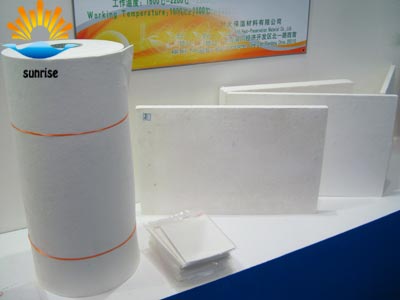SEARCH
when you need our product,simply enter the name of the product you are looking for to continue.
Refractory Knowledge
- Clay refractory ramming material
- Five Advantages of Ceramic Fiber Board
- Refractory Materials Used In the Bogie Hearth Furnace
- Which refractory materials are acidic products?
- High Quality Ceramic Fiber Blankets For Sale are Popular All
- Lightweight firebrick ten functions
- Phone:0086-371-63838939
- Email:sales@sunriserefr.com
- Office Address: No.36 Fengchan Road Of Zhengzhou, Henan, China (Mainland)
Contact Us
News & Events
The Difference Between The Classification Temperature And Operating Temperature Of Ceramic Fiber
Date:2016-05-17 17:54 | From:Zhengzhou Sunrise Refractory | Author:admin
The classification temperature of ceramic fiber is the maximum operating temperature. Different from the classification temperature, the operating temperature refers to the temperature at which the it is used in the long term. To know the difference between them is very importance for the selection of the right ceramic fiber.

The classification temperature is defined as the temperature at which a linear shrinkage of 4% is not exceeded after 24 hour heat treatment in the electrically heated laboratory oven and in a neutral atmosphere. Depending on the type of product, the value may not exceed the following limits: 2% for boards and shaped products, 4% for mats and papers. The classification temperature is specified in 50℃ steps (starting at 850℃ and up to 1600℃).
The classification temperature does not mean that the product can be used continuously at this temperature, or it will have a short service life. In the field, the continuous application temperature is typically 100-150℃ below the classification temperature.
The safe long-term operating temperature refers to the temperature at which a linear shrinkage of 3% is not exceeded after 24 hour heat treatment. At this temperature, the crystalline transformation between amorphous fiber and crystalline fiber and the growth of the crystals are slow. The fiber is soft and elastic and its performance is stable.
The operating temperature and service life of ceramic fiber are closely related to the operating conditions(the atmosphere, composition and content of corrosive substances, etc.).
When used under the operating temperature, the crystals grow slowly and ceramic fiber is stable. In an oxidizing atmosphere without outside collision, its service life can be up to 5-10 years. In an reducing atmosphere, ceramic fiber made of high purity synthetic materials is used as the lining materials of industrial furnaces with anti-corrosion coatings spraying on the surface. This can not only improve the chemical stability, but also improve the erosion resistant performance of the fiber lining and at the same time reduce its heat shrinkage. In order to achieve the same insulation performance in the reducing atmosphere to that in the oxidizing atmosphere, the thickness of the ceramic fiber should be increased based on the chemical composition of the reducing atmosphere.
The operating temperature should be determined based on the the type of the fuels(gas, oil and coal), the atmosphere and the chemical composition of the corrosion substances. The operating temperature in the reducing atmosphere should be 100-150℃ lower than that in the oxidizing atmosphere. In fuel furnaces, the operating temperature is 150-200℃ lower than that in the electric furnaces. In the vacuum atmosphere, the operating temperature should be 200~250℃ lower than that in the oxidizing atmosphere.
Based on the classification temperature, ceramic fiber can be divided into 4 grades: 1000℃ common type, 1260℃ standard type, 1360℃ high alumina type and 1450℃ zirconia type. All these temperature are the maximum temperature. The operating temperature should be lower.
If you have any needs our help or are interested in our products, you can click online advisorychat with us online, or call our customer service telephone: 0086-0371-63838939. We will sincerely serve for you!
